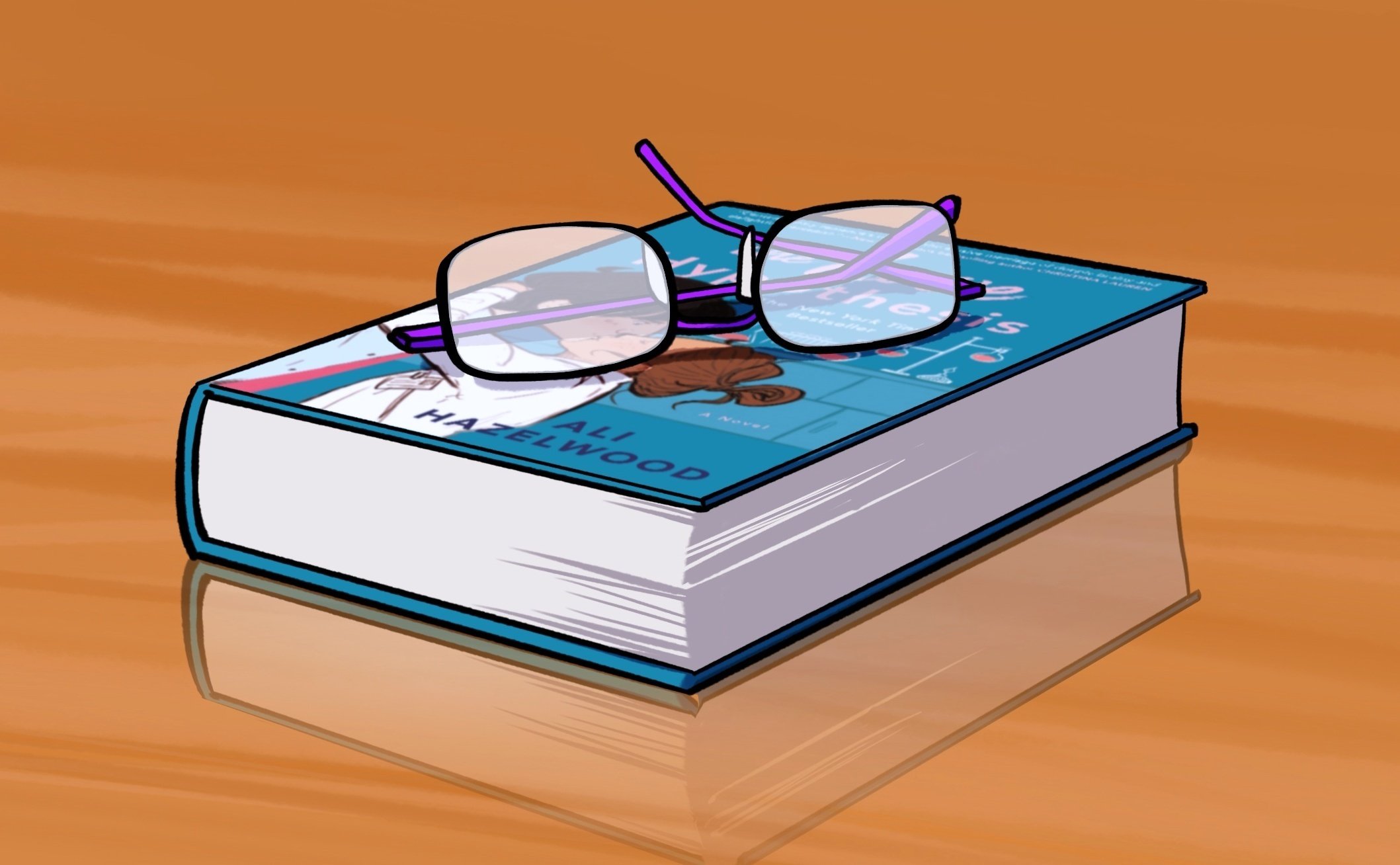Spotted: a fake-relationship turned real romance between a biology Ph.D. student and a biology professor, set in the familiar terrain of our very own Stanford University. Although I am not the biggest fan of romance books, Ali Hazelwood’s debut novel immediately caught my attention. This is it, I thought to myself. This could be Stanford’s very own “Pride and Prejudice”! Then I bought the book right away.
In “The Love Hypothesis,” author and cognitive neuroscientist Ali Hazelwood combines her two passions, writing and science, to give her readers a contemporary love story that reflects Stanford students’ frustrations with the elite institution. While delivering readers’ favorite romance tropes, Hazelwood also explores the fascinating world of biology and critiques academia as it exists today. In order to convince her skeptical best friend Anh that she’s in a happy relationship, Olive Smith, our protagonist and a third-year Ph.D. candidate, kisses Adam Carlsen, a professor notorious for giving low grades and harsh critiques. After the incident, Olive and Adam decide to fake-date so that Anh will continue to buy Olive’s charade and Stanford, convinced Adam’s there to stay, will fund his research. The two make a peculiar and even problematic couple because of their faculty-student relationship, yet their fake-dating persists.
Hazelwood began her writing career with Star Trek and Star Wars fan fiction, which she wrote frequently during the last year of her Ph.D. program. Along with her personal experiences in academia, these media franchises significantly shaped her novel. “The Love Hypothesis” incorporates emails between students and faculty members regarding research collaborations, portrays the day-to-day life of Ph.D. students in and outside of their labs and frequently mentions Olive’s work investigating blood biomarkers as an early-detection mechanism for pancreatic cancer, a real-life popular research area. Although Olive’s fictitious life is not a realistic depiction of life at Stanford, Hazelwood adequately portrays common student struggles and the work of today’s biologists. In the book, the emphasis on collaboration within the field of biology, depicted through Olive’s desire to partner with computational modelers, or even small details such as a graduate students’ eagerness to use the PCR machine first, reflect Hazelwood’s own knowledge and passion for the field. In addition, her love of Star Wars comes out through the characters of Olive and Adam, the former with a shy yet bubbly persona like Rey and the latter emulating Kylo Ren’s angst and detached attitude.
Reading the book through a Cardinal lens, you realize Hazelwood is not exactly campus-fluent. When Olive and Adam are setting the rules for their fake relationship, they agree to meet at Starbucks every Wednesday morning to make their relationship look more convincing, yet not once do they go to CoHo or Coupa. During their Starbucks dates, Olive constantly gets pumpkin spice lattes, and the two never go out to get boba. Considering the popularity of boba shops all around Palo Alto and the frequent door-dash boba orders during on-calls, it was especially peculiar that Olive and Adam did not participate in the boba culture at Stanford. Later, when Olive goes to visit Adam, he’s surprised to learn she doesn’t drive but instead bikes, as if he’s not seen the profuse bikes around campus. Compounding our confusion, Olive complains about there being no bike lanes around, which is very unlike anywhere near Stanford. It is also surprising that Olive never uses the Marguerite to get to the School of Medicine, a common practice among Ph.D. students.
Aside from documenting the ups and downs of fake-dating on the Farm, “The Love Hypothesis” strikes a more sincere chord, as it doesn’t shy away from criticizing the world of academia. Hazelwood highlights how STEM academia is problematic through Olive’s experiences as well as those of her close friends and Adam. She acknowledges and critiques the chronic underpayment of student researchers, cultural sexism in academia, racism in higher education and the demoralizing attitudes of faculty toward beginner researchers.
“Committing to years of unappreciated, underpaid 80-hour workweeks might not be good for [Olive’s] mental health,” writes Hazelwood, condemning the lack of appreciation researchers express for student work from the very first page of her novel. She further depicts Olive’s struggle with rent and meals due to her low salary in an expensive city. Through Olive’s personal struggles, Hazelwood attests that current researchers are not paid adequately by the multimillion-dollar institutions they work in, which often withholds them from feeling passion for their jobs.
Moreover, she repeatedly criticizes the sexist and racist practices in academia: “[Olive] was the only woman in the room, virtually alone in a sea of white men,” Hazelwood writes to expose the structural inequalities in academia that refuse women and people of color seats at the table. She reiterates throughout the book how the lack of diversity in Olive’s professional and academic environments makes her feel out of place and pushes her to doubt her own abilities, resulting in tremendous anxiety and imposter syndrome.
A breath of fresh air, Olive’s best friend Anh is characterized by her enthusiasm and optimistic outlook throughout the book, even in the face of constant gender discrimination. She is also the head of Stanford Women in Science Association and director of outreach for the Organization of BIPOC Scientists. Anh’s passion within the field and her positive perception of the future reflects a hope for change and highlights the importance of such organizations to diversify the field and create safer environments for women.
While it doesn’t feel true to Stanford at all times, Hazelwood’s novel presents both the beauty of biology and the downfalls of academia, all while narrating a gripping romance. Meanwhile, Hazelwood herself proves that one can follow their passions in STEM and creative writing simultaneously by excelling as a researcher and a novelist. For those who live for classic romance tropes, love biology or are looking for examples of how to reach faculty through email, “The Love Hypothesis” has you covered!
Editor’s Note: This article is a review and includes subjective opinions, thoughts and critiques.
